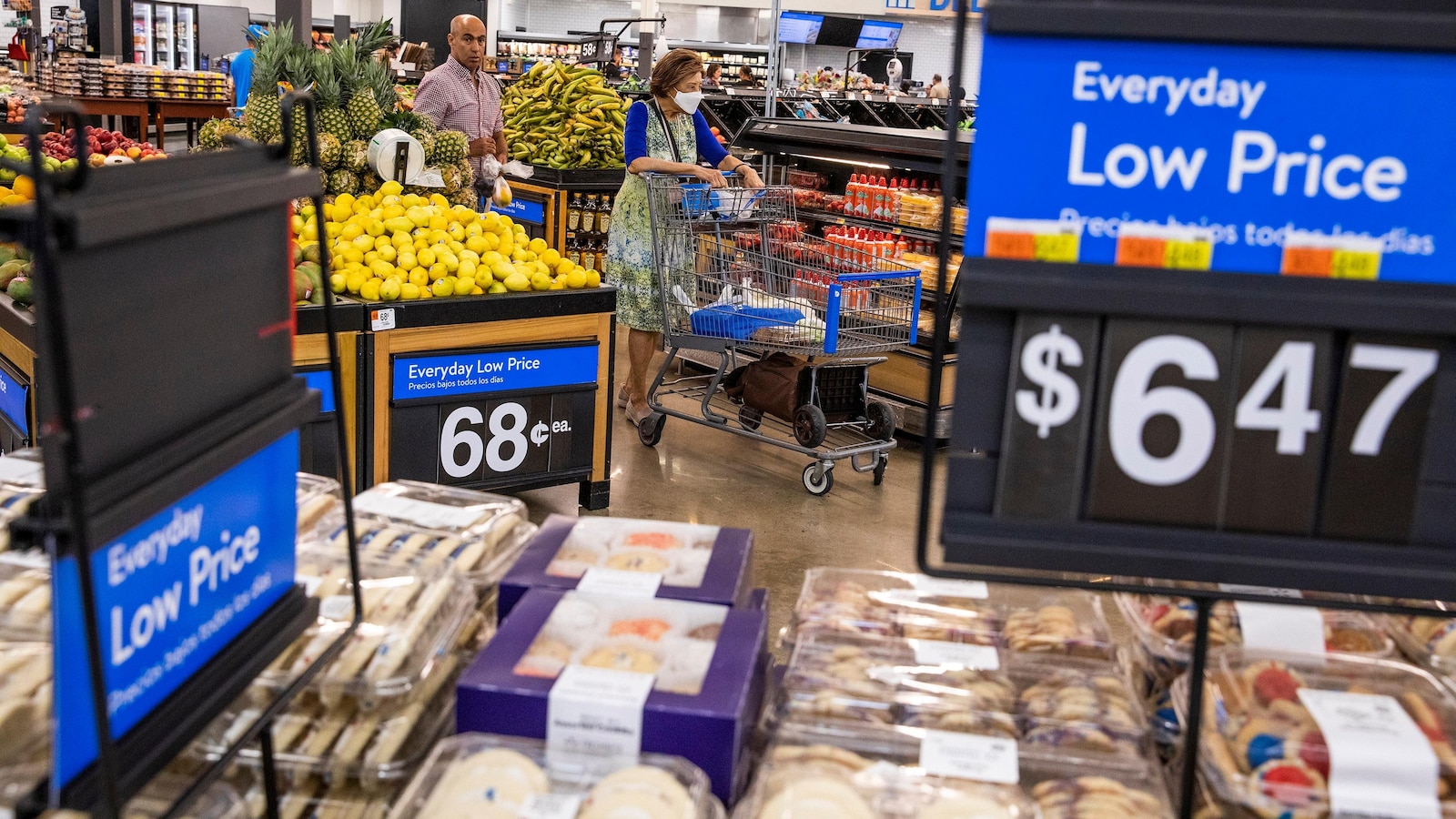
NEW YORK — If you’ve noticed that you’re paying more than before for the same amount of groceries, you’re not the only one. Inflation is easing, but grocery prices are still high — up 21%, on average, since inflation started to surge more than three years ago.
Unlike some other items, you can’t just stop buying groceries when they get pricey. There’s nothing you can do about inflation, but you can find ways to save on groceries so they don’t heavily affect your wallet or your eating habits. These include using coupons, budgeting and buying in bulk.
Here’s are some expert recommendations for saving on groceries:
Kiersten Torok started using coupons back when she was in high school, after her parents lost their jobs during the 2008 recession. She began relying on them even more in 2020, when she lost her own job during the pandemic. Now she’s using her social media platform to help others learn how to save.
“When times like these come up, coupons are a necessity for so many Americans,” said Torok, known on Instagram and TikTok as Torok Coupon Hunter.
Many might think that using coupons means cutting them out of a magazine. While you can certainly still do that, there are now easier ways to get the discounts. Many stores, like Walmart and Target, have coupons available on their apps.
“All you have to do is scan an item in a store, the coupons pop up on your app and then they automatically apply in the register,” Torok said. “It’s become much more streamlined.”
One of Torok’s coupon golden rules is: Never pay big for toothpaste — there’s always a combination of coupons and offers available. For anyone who wants to try couponing, Torok recommends that you first start using them at your favorite store and never buy things you don’t need, even if there’s a big discount.
Apps like Flipp, which lets you browse for coupons from all major grocery stores, and Ibotta, an app that gives you cashback for using coupons, can make your journey with couponing easier.
Making a budget is a key to keeping grocery spending under control, and the first step is to track how much you’re already spending. Start by reviewing how much you have spent on the last few times you’ve gone grocery shopping, recommended David Brindley, deputy editor for AARP Bulletin.
If you don’t keep receipts from past grocery runs, try looking at your bank account statement and adding up the grocery charges. Once you know how much you spend on groceries, set a goal, for example, staying within a specific budget or reducing your spending.
You need a plan, but before you make one, ensure you know what you currently have in your fridge and your pantry. Sarah Schweisthal, personal finance expert and social media manager at budgeting app YNAB, recommends taking everything out and making an inventory so you don’t buy duplicates of things you already have on hand.
Brindley also recommends planning to cook multiple meals with similar ingredients, which saves money and also cuts down on food waste.
Once you’ve tracked your spending and inventoried what you already have, the next step is to make a plan. Write down the items you’re looking to buy and your estimated cost, making sure you stay on budget. Meal planning for the week or month can be a good way to stay on top of your spending, Schweisthal said.
Going up and down the aisles can sometimes make you crave things that you haven’t planned for, like a snack or a new dish. If you foresee that it’ll be hard for you to stick to your list, include some flexibility in your plan, such as allotting a specific amount to buy snacks or a random item you see at the checkout line.
“I think having flexibility in a plan actually helps you stick to it more,” Schweisthal said.
Making a plan can be as simple as writing down a list on paper or in your phone’s notes app. Or, you can use apps that specifically help you with meal planning such as AnyList or Mealime.
If you tend to wander off your grocery list because every time you go to the store you buy things you don’t need, shopping online and picking up curbside is a good workaround.
“I 100% recommend sitting down Sunday morning and just looking at the stores and comparing the items you need for the week, especially with things you can get for curbside pickup,” Torok said.
If you buy your groceries from multiple stores because each has better prices on some items, ordering ahead of time can also save time.
If you are in charge of buying groceries for your entire family, it can be beneficial to include them in your grocery budgeting routine. For Torok, this has meant teaching her children how to scan coupons while they shop.
Since buying in bulk can be very cost-effective. Brindley also recommends that you team up with a friend or a family member to buy specific items in bulk and share the discount.
Lastly, you can save money by using food-sharing apps such as Olio, which connects people around their community to share extra grocery items, and Too Good to Go, where you can buy surplus food at a discount.
___
The Associated Press receives support from Charles Schwab Foundation for educational and explanatory reporting to improve financial literacy. The independent foundation is separate from Charles Schwab and Co. Inc. The AP is solely responsible for its journalism.
___
A version of this story was published on July 12, 2024. This version has been updated with the latest inflation report.
Grocery shopping is a necessary expense for most people, but it doesn’t have to break the bank. With a little planning and strategy, you can save money on groceries without sacrificing the quality of your meals. Here are some tips for shopping smart and cutting costs on your grocery bill:
1. Make a meal plan: Before heading to the grocery store, take some time to plan out your meals for the week. This will help you avoid impulse purchases and ensure that you only buy what you need. Look for recipes that use similar ingredients to minimize waste and save money.
2. Use coupons and sales: Keep an eye out for coupons and sales on items you regularly buy. Many grocery stores offer digital coupons that you can load onto your loyalty card, as well as weekly sales flyers that highlight discounted items. Take advantage of these deals to save money on your groceries.
3. Buy in bulk: Buying in bulk can be a cost-effective way to stock up on pantry staples like rice, pasta, and canned goods. Look for items that have a long shelf life and buy them in larger quantities to save money in the long run.
4. Shop seasonally: Fruits and vegetables are often cheaper when they are in season, so try to buy produce that is in season to save money. You can also consider buying frozen fruits and vegetables, which are often more affordable than fresh produce and have a longer shelf life.
5. Compare prices: Before making a purchase, compare prices at different stores or online to make sure you are getting the best deal. Some grocery stores offer price matching, so be sure to take advantage of this if you find a lower price elsewhere.
6. Avoid convenience foods: Pre-packaged and convenience foods can be convenient, but they are often more expensive than cooking from scratch. Try to limit your purchases of these items and opt for homemade meals instead.
7. Use loyalty programs: Many grocery stores offer loyalty programs that allow you to earn points or discounts on future purchases. Sign up for these programs and take advantage of any rewards or discounts they offer.
By following these tips, you can save money on groceries and make the most of your food budget. With a little planning and smart shopping, you can cut costs without sacrificing the quality of your meals.


